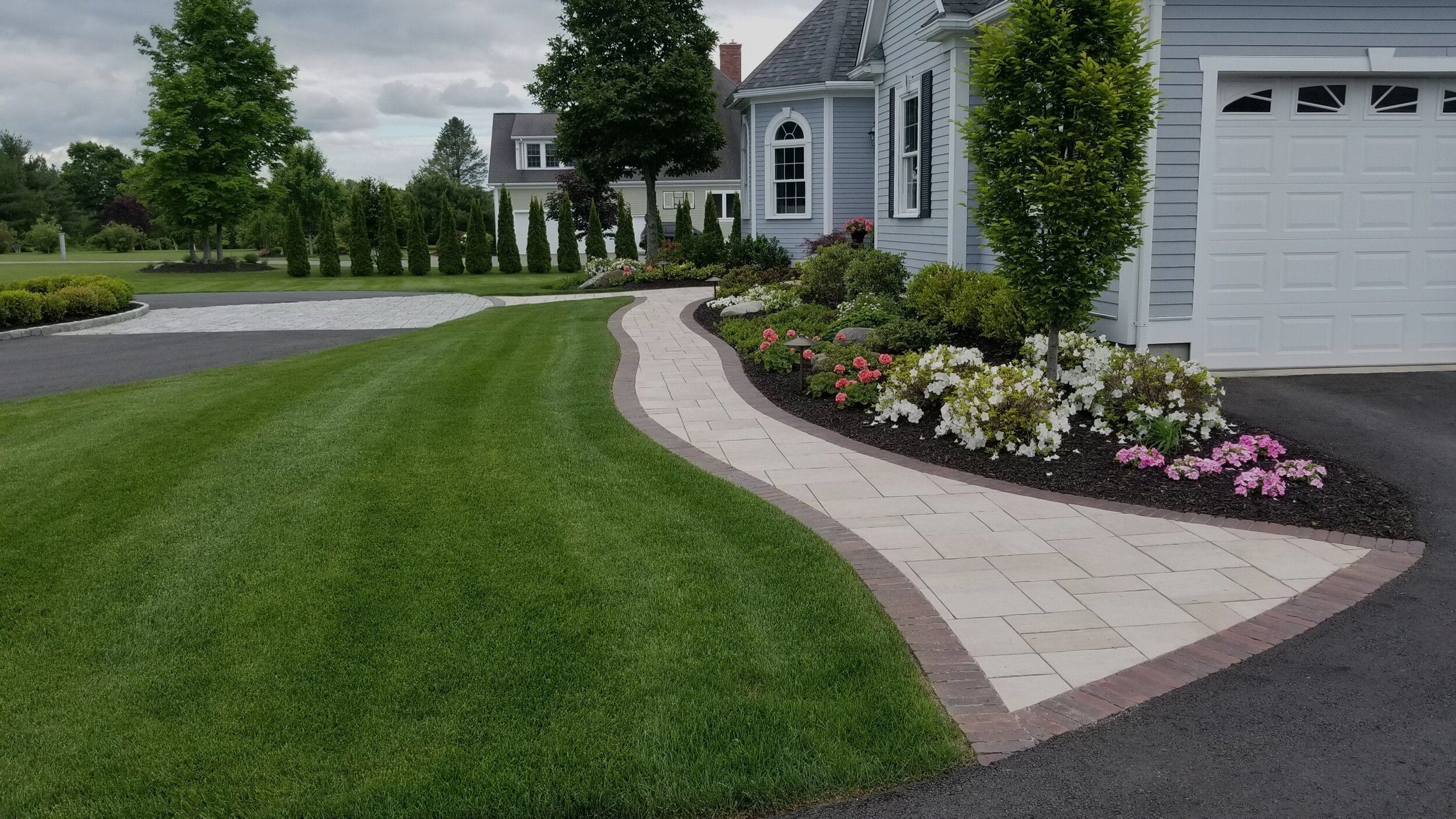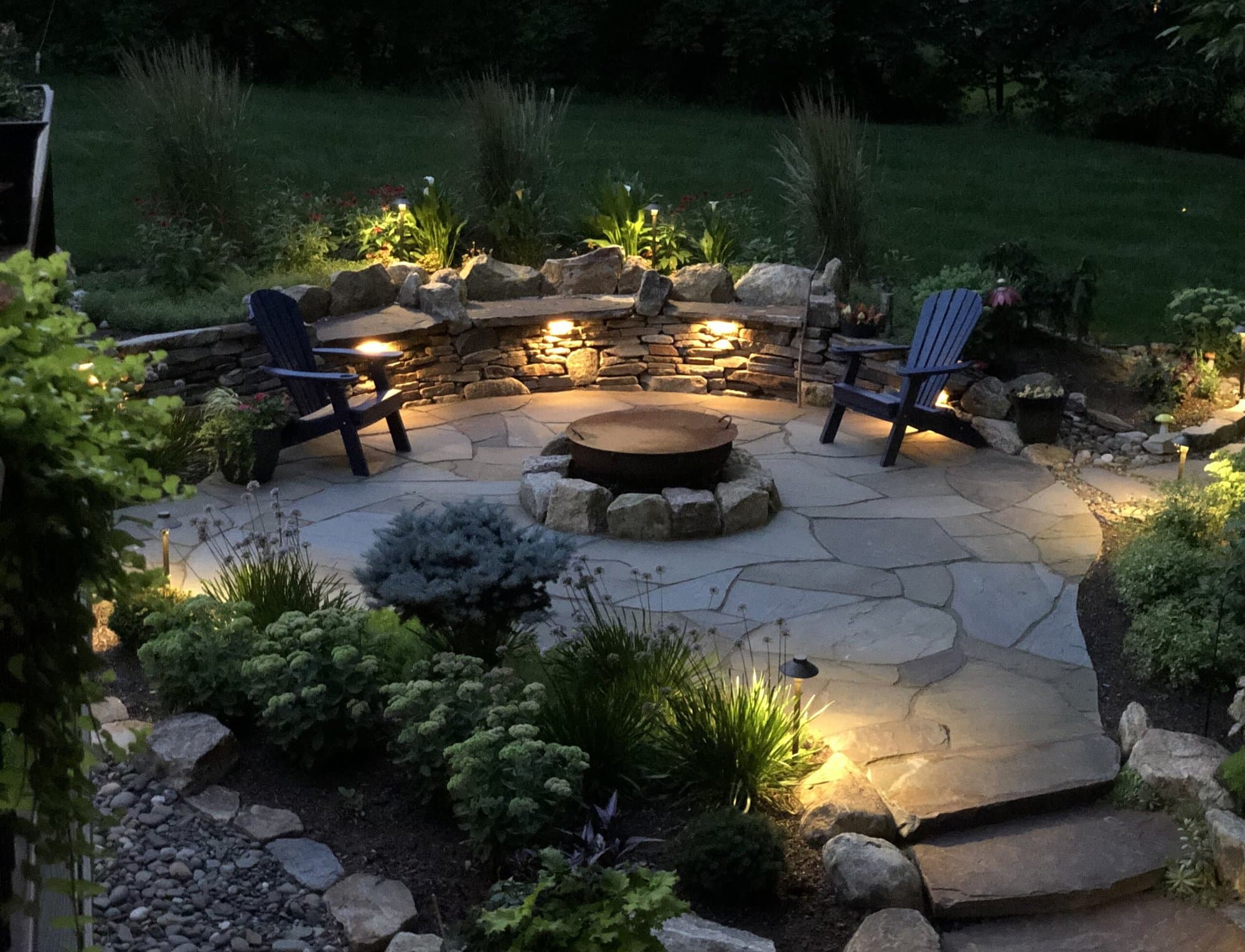A Comprehensive Guide to Designing and Implementing Effective Landscaping Solutions
The art and scientific research of landscape design expand past simple aesthetics; they entail a thoughtful assimilation of design principles, environmental stewardship, and practical implementation. A detailed guide to effective landscape design options begins with a thorough understanding of your outside space, emphasizing the relevance of percentage, unity, and balance. As we discover sustainable techniques and the choice of ideal plants, the implications for biodiversity and area wellness become significantly obvious. What techniques can one employ to make certain these landscapes not only prosper however additionally flourish in harmony with their environments?

Recognizing Landscape Style Principles
One could wonder what fundamental aspects add to reliable landscape style. At its core, effective landscape style depends upon a number of key concepts that direct the setup and choice of elements within an area. These principles consist of unity, proportion, rhythm, and equilibrium, each offering to create an unified outdoor atmosphere.
Unity refers to the natural relationship among various elements, ensuring that they function with each other visually and functionally. Equilibrium can be achieved via asymmetrical or in proportion arrangements, enabling the landscape to feel stable and welcoming. Proportion includes understanding the scale of components in connection to each various other and the surrounding atmosphere, advertising visual harmony and convenience.

Evaluating Your Outdoor Room
Before executing the concepts of landscape design, a thorough evaluation of your outside room is important. This first evaluation assists specify the scope of your landscaping task and ensures that your design lines up with the unique qualities of your residential or commercial property. Begin by examining the measurements of your space, taking exact dimensions to recognize the available area for numerous elements such as paths, yards, and patios.
Next, observe the existing functions of your landscape, consisting of topography, dirt high quality, and drain patterns. These elements substantially affect plant choice and placement. Additionally, assess the sunshine direct exposure throughout various locations throughout the day, as this will influence the sorts of plants that thrive in your yard.
Consider the microclimates produced by structures, trees, and other barriers, as they can affect temperature and dampness degrees. Last but not least, bear in mind of any existing plants or hardscape aspects that you wish to keep or get rid of. This comprehensive assessment prepares for a effective and educated landscaping remedy, making certain that your style is not only visually pleasing but additionally functional and sustainable for years to find.
Sustainable Landscape Design Techniques
These methods not just advertise environmental equilibrium yet also improve the visual and useful value of a landscape. Applying reliable irrigation systems, such as drip irrigation, reduces water waste and guarantees that plants obtain ample moisture (Palm Desert Landscaping).

Another efficient method is the strategic placement of hedges and trees to offer all-natural windbreaks and color, hence lowering energy expenses (Palm Desert Landscaping). Rainfall gardens can be integrated right into the landscape layout to manage stormwater runoff successfully, filtering system pollutants before they enter waterways
Selecting the Right Plant Kingdoms
Picking the right plants for your landscape is vital to attaining both aesthetic appeal and ecological harmony. The procedure starts with an understanding of your neighborhood environment, dirt problems, and the specific microenvironments within your landscape. Assessing elements such as sunlight exposure, dampness degrees, and existing plants will certainly aid you select plants that thrive in your unique setting.
Consider incorporating native plants, as they are well-adapted to local conditions, call for much less upkeep, and assistance neighborhood wild animals. Furthermore, choosing This Site a diverse range of species can enhance biodiversity while reducing the risk of condition and parasite episodes. It is essential to evaluate the development behaviors, growing periods, and seasonal colors of potential plants to develop a natural and dynamic landscape.
In addition, believe regarding the intended use of the space; for circumstances, if the location will experience high foot traffic, decide for durable ground covers. By thoughtfully picking plants that straighten with both your aesthetic goals and environmental demands, you can develop a i was reading this sustainable landscape that not just improves your building however also adds positively to the bordering environment.

Implementation and Upkeep Strategies
Once the ideal plants have actually been chosen for your landscape, the focus moves to reliable execution and ongoing maintenance methods. Effective installment starts with proper site preparation, that includes dirt testing to determine nutrient levels and pH, complied with by modifying the dirt as required. Thoroughly set up plants according to their development behaviors and light requirements, making certain sufficient spacing to advertise healthy and balanced development.
Watering is a crucial aspect of application. Develop a watering schedule that thinks about the certain requirements of each plant types, changing for seasonal adjustments. Making use of drip irrigation systems can improve water efficiency and decrease runoff.
Maintenance strategies must be implemented to ensure the longevity and vigor of your landscape. Normal tasks include weeding, mulching, and pruning to regulate development and stop illness. Fertilization should be conducted based upon dirt tests, providing the necessary nutrients without over-fertilizing.
Monitoring for parasites and conditions is important; early discovery can avoid considerable damages. Seasonal changes to upkeep routines, such as preparing and winterizing perennials for springtime growth, will certainly ensure that your landscape continues to be aesthetically attractive and healthy and balanced year-round.
Final Thought
Effective execution and ongoing maintenance even more make sure the long life and vigor of landscapes. By integrating these elements, landscapes can be transformed into lovely, useful settings that advertise biodiversity and add positively to community well-being.
One might wonder what foundational aspects contribute to efficient landscape style. At its core, successful landscape style hinges on a number of essential principles that direct the plan and choice of aspects within an area.Choosing the right plants for click here to find out more your landscape is vital to accomplishing both aesthetic charm and environmental harmony. It is vital to assess the growth practices, blooming periods, and seasonal shades of possible plants to develop a dynamic and cohesive landscape.
As soon as the appropriate plants have actually been selected for your landscape, the focus shifts to reliable execution and continuous maintenance techniques.